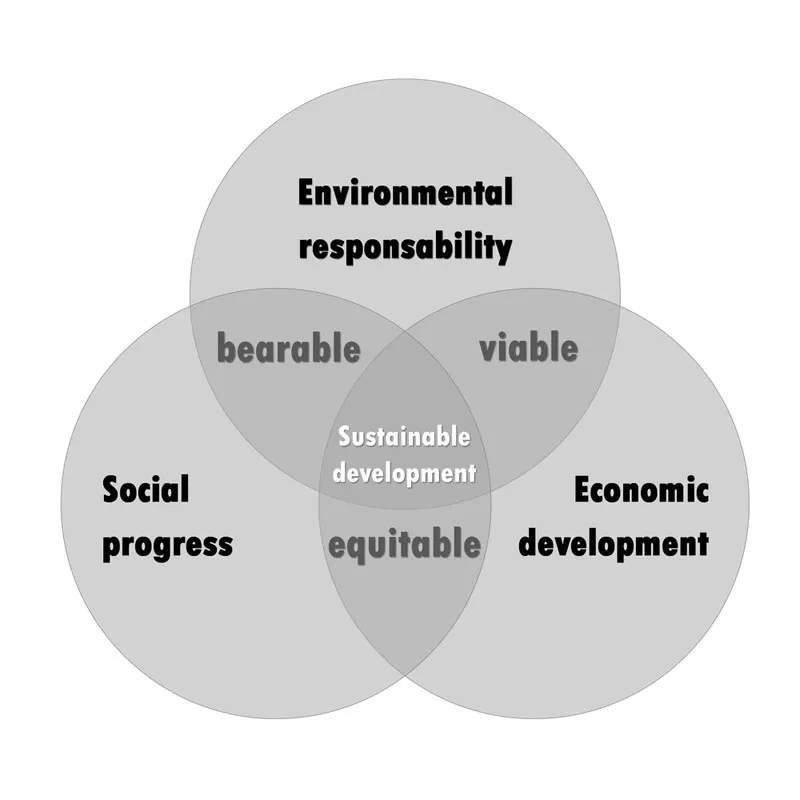Why we need to develop a sustainable growth model blending the best of the West, China, and India
India has a wealth of traditional knowledge in spirituality and environmental awareness, and the need of the hour is to blend this wisdom with dominant models of development from the West and China.
A range of industry and academic experts gathered to debate and formulate such a hybrid model of development, at the ‘India Sustainable Growth Conclave’ held recently at IIM Bangalore. “India is where China was in the 1980s. But can the world handle two Chinas?” asked Prof. P D Jose, Associate Professor of Corporate Strategy & Policy, IIM Bangalore. Such issues even cut across national boundaries, as in the case of river ecosystems of the Brahmaputra and Mekong.

Image : Shutterstock
“Indians often don’t realise their own best practices until a Westerner tells them how good they are,” began Benedict Parmanand, Editor and Publisher of ‘SustainabilityNext.’ Experts such as Adam Werbach, author of ‘Strategy for Sustainability,’ have been inspired by Indian approaches to conservation (see also my book review of ‘Frugal Innovation’ by Navi Radjou and Jaideep Prabhu).
Hybrid models
“How can we improve on capitalism without throwing away its core principle of private ownership of wealth? ” asked Ram Nidumolu, CEO of Innovastrat. The Western capitalist model of self-interest, utility maximisation, and compound growth is not sustainable – and the Chinese model of political capital, state intervention, and political control has delivered impressive results but with its own challenges as well.
Concerns of the private sector and government need to be balanced with a sense of shared interest, well-being, and a greater sense of consciousness for the environment, said Ram. “Motivators of change should be not just about business and economy, but an internal sense of self,” he advocated. There should be more emphasis on long-term thinking, creativity, trust, inclusion, integrity, and care in such a model of ‘dharma capitalism.’
“We must extend well-being and happiness not just to self and family, but community and the world,” said Madhu Pandit Dasa, Chairman, Akshaya Patra. The foundation serves free lunch to over 1.5 million school children each day.
The Worldwatch Institute has called for spiritually derived models of development, which look beyond acquisition, consumption, and income as the only metrics of success and happiness. “Ignorance of the higher purposes of life has led to today’s environmental crisis. Laws of the market should be balanced with the laws of nature,” cautioned Madhu.
A century ago, one of the touted benefits of the newly invented car was that it would reduce pollution from horse dung and urine. “Look at the new pollution created by cars,” joked Madhu.
Three Waves of Indian Environmentalism
Dr. Ramachandra Guha, eminent environmental historian, traced three waves of the environmental movement in India: early environmental thinkers (1915-1950, eg. J. C. Kumarappa, Madeline Slade), social movements (eg. Chipko movement of the 1970s, Narmada movement), and today’s blend of liberalisation, scientific action, and social activism.

Image : Shutterstock
“We are a multi-faith country. Public policy should be built on science and reason and not on exclusion of some religions,” he urged. No one is asking for a return to the past or for all to live like Gandhi – but there is also need to recognise the importance of practices like community preservation of forests.
Liberalisation reduced poverty, but developed a blind eye to the environment, while also leading to crony capitalism. “India is now an environmental basket case,” Guha lamented. Social activism is called for, which has two parts: protest and reconstruction.
Social entrepreneurship
India is in the beginning of a major entrepreneurship boom, and this extends to social entrepreneurs and eco-preneurs as well – many of whom are forging ties through online and on-the-ground connections.
These social innovators have a wide range of products and services, such as vertical gardens (Green Drops), urban rooftop gardens (Living Greens), organic produce (Green OK, Chetna, AgSri), composting (Reap Benefit), waste management (Ventana, Saahas, Sampoorna), e-waste management (BinBag, RenewIT), and solar energy (Urja). Good examples of environmental activism, which blend online networking with street action include Whitefield Rising and Save Whitefield.
Three forms of ‘crowd’ activity bode well for amplification of social movements: crowdsourcing (ideas, content), crowd-sharing (donation/sharing of resources), and crowdfunding (fund raising).
“It is important to go beyond cyber-footprints and address ground realities,” said angel investor Nagaraja Prakasam. Innovators in India should also address India-specific problems with ‘profit-people-planet’ impact strategies rather than being content with ‘me-too’ models copied from abroad. “If Levi’s says it is cool to wear khadi, we will wear khadi,” he wryly remarked.
Good examples of innovation from India cited by Nagaraja include Uniphore (patent-pending voice-based workflow solutions) and Saahas (eco-products like business cards made from recycled paper).
Educational transformation
Educational institutes can take the lead in a number of areas; for example IIM Bangalore plans to become a zero-waste campus in five years, with all waste recycled. IISc has also set similar targets.
“India needs systemic thinking, not just systematic thinking,” said Prof. Vasanthi Srinivasan of IIM Bangalore. There needs to be more design thinking and integrated thinking in the Indian education system, instead of siloed delivery.
IIM Bangalore has set up a useful portal for increasing awareness about CSR practices, called TeachCSR, according to Manoj Chakravarti, head of the Centre for Corporate Governance.
Sustainability as corporate and SMB innovation driver
Global corporates need to create a better everyday life for people, advised Patrik Antoni, IKEA’s Country Head for Sustainability. The company has 50 suppliers in India, and has developed a range of sustainability principles: help customers have a healthy and sustainable life, save energy, use sustainably-sourced resources, and improve lives of people far away as well.
IKEA is looking at moving towards LEDs for mass-market lighting solutions, using cotton which has less pesticide, and becoming power neutral. “Sustainability is the main driver for our innovation,” Patrik said; the company is looking at uses of coir and water hyacinth for the first time.
Citizen and government involvement
“Comprehension of how environment and social issues can impact business is vital,” said Santosh Jayaraman, Partner, Sustainability, KPMG India. Mega forces like climate change, water scarcity, energy mix, population growth, food security, and urbanisation have impacts on business. Understanding the risks and opportunities is vital for industry.

Image : Shutterstock
Environmental regulations, such as banning of diesel vehicles in a step-wise manner with consensus from the stakeholders, should be implemented in a phased approach. Corporate governance should emphasise transparency and accountability.
For their part, citizens should come out of the “tragedy of commons” mindset and accept collective ownership, Santosh added. Government policies on issues like eliminating plastic packaging and municipal solid waste management should be supported by infrastructure and services.
The sessions and panels were followed by a round of audience discussion on topics such as ‘ruralisation’ of cities, incubators for NGOs, sustainability imperatives of SMBs, inputs from other continents, the need for India-China cooperation instead of competition, and the importance of experimentation along with experience and excellence.
The models discussed at the conclave will be turned into a working paper and shared with Niti Aayog, relevant ministries, think tanks, universities, and the media.







